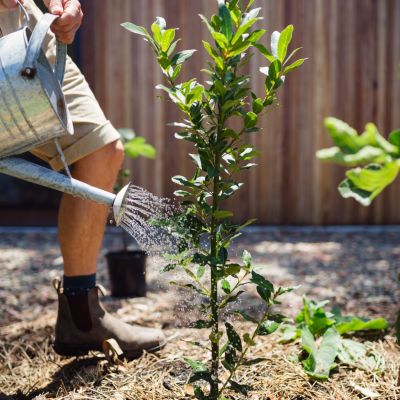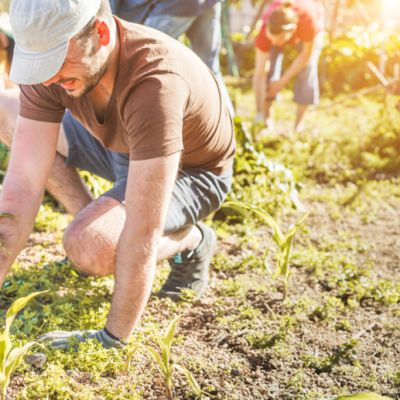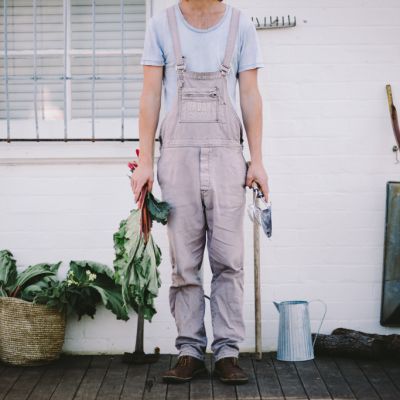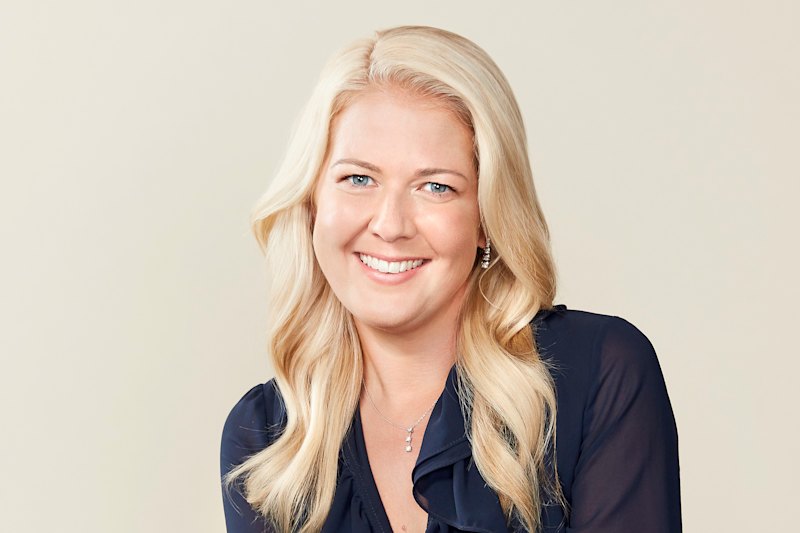Tips and tricks for propagating edibles and seed saving
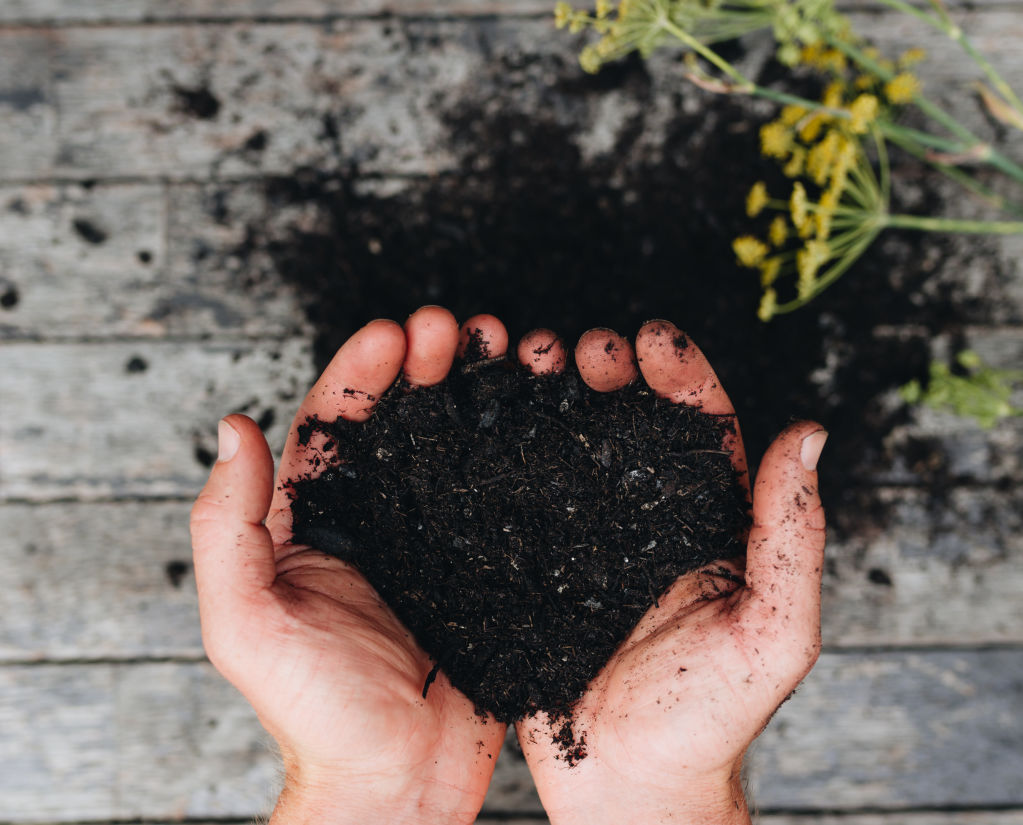
Rummaging through the shed while working from home, I found some “plant material” that reminded me of all the little propagation jobs I had planned for when I had some spare time. It seems like 2020 has granted a lot of people time for these long-forgotten-about tasks.
I found bulbs of garlic I had harvested in spring, and coriander seeds my mum gave me from her plant. Then there’s also the kale in my garden that had gone to seed and my turmeric that was ready to be divided and planted.
All these activities, plus a few extra below, are what we call propagation – the process of growing new plants from existing ones. These seven techniques are just some of the ways you can get started with plants you might already have at home. More advanced techniques like grafting citrus varieties together are possible but require a little more experience.
Learn how to live a more sustainable life on Somewhere Else:
Seeds
Seed saving is just that – saving your seeds from plants that “went to seed” for the next season to grow the same strain or variety again. Coriander is a herb that’s best planted from seed directly, early autumn is perfect if you’re near Sydney as the days are getting shorter and the plants will last you through winter. Just loosen the soil in beds or pots, add some seed raising mix or compost, as well as some organic plant food.

You can usually sprinkle fine seeds (lettuce, chives, coriander) in a line and cover with a few millimetres of soil. But be sure to bury your beetroot, pea, spinach and other larger seeds at the recommended spacing and double depth of seed. Once they start to sprout through, thin your seedlings out to single plants (just apply your self-isolation techniques) and water them daily.
Seedlings
Seedlings can be planted out once they’ve been teased apart from the punnet. Avoid squeezing the fragile stems. Simply hold a leaf to handle and plant into the garden or pot. If your seedlings are tall and floppy, bury them a little deeper. Where possible, always purchase the punnet with the shortest seedlings that look easiest to divide. Most people buy the tallest ones that are packed in the most, which is actually counterproductive to growing strong plants.
Bulbs and tubers
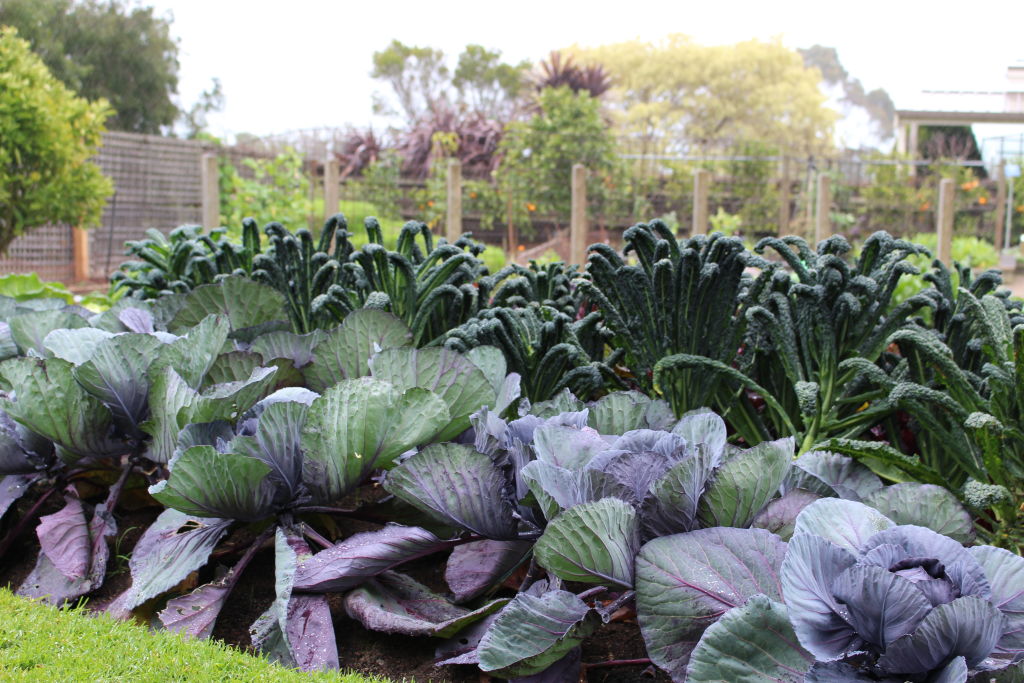
April is the best time in Sydney to plant your garlic. We loved the flavour of our homegrown garlic from last year, so I’ll happily replant the same ones again. Just divide the bulb into individual cloves and plant them pointy end up, about a finger-depth deep with 20-centimetre spacing in full sun.
Division
Like I said, I have turmeric growing, so I’ll pull up a bigger plant and pluck apart several rhizomes (roots) off and replant them to continue producing.
Cuttings
Cut a finger-length tip off herbs such as rosemary, lavender or pineapple sage and remove the lower leaves from the stem. I always dip mine in a growth hormone solution for better results. Place the bare stem into a pot of potting mix and cover with clear plastic to hold in the humidity – it doesn’t have roots yet so will need to have moisture in the air surrounding it.
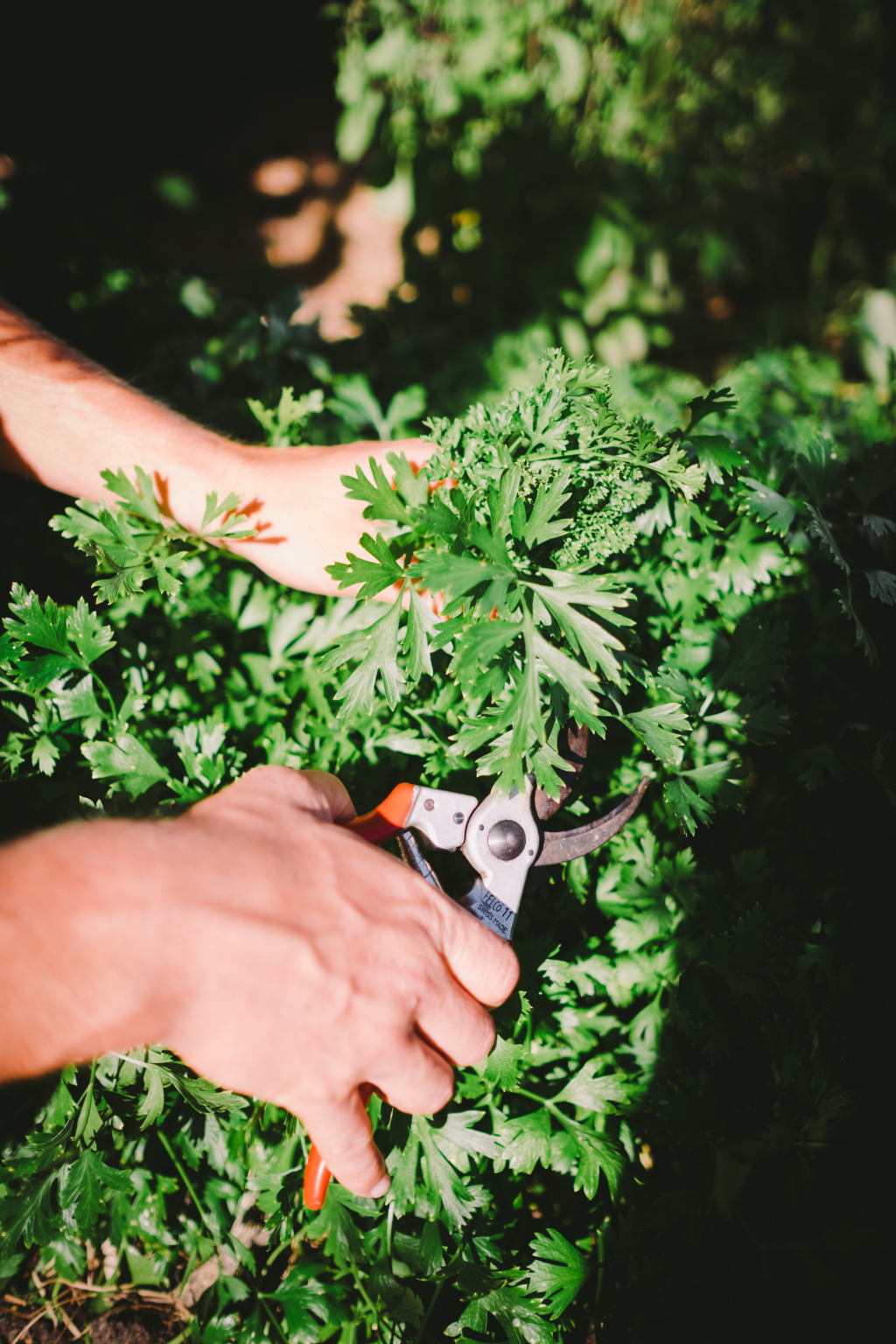
Expect these to produce roots over a month or two depending on plant type and temperature. Google your plant of choice to see if it can be propagated this way first as it may require a different technique.
Pollination
You can be the bee. If flowers are dropping off your pumpkins or zucchinis early and you’re not seeing the fruits you wished for, perhaps your garden wasn’t visited by pollinators this time ’round? Next summer, use a soft paint brush or similar material to transfer pollen from flower to flower. Or even better, you could buy a hive of native stingless bees to aid in this process. They’ll improve pollination and biodiversity in the garden and are much easier to look after than most people assume.
Saving seeds
If you’ve ever let your garden go wild you’re probably aware that all the flowers turn to seed (if pollinated) and most can be harvested and used again. Some can be taken out of the fruit eg. tomato or pumpkin and dried over paper towels. Depending on the season either collect or replant them straight away. Remember to label, date, and keep dry and cool. Let one of your herb plants go to seed next time and see what seeds you can save. Try dill, coriander, parsley, kale, rocket, marigold flowers, or even dry out some chilli seeds.
We recommend
States
Capital Cities
Capital Cities - Rentals
Popular Areas
Allhomes
More
